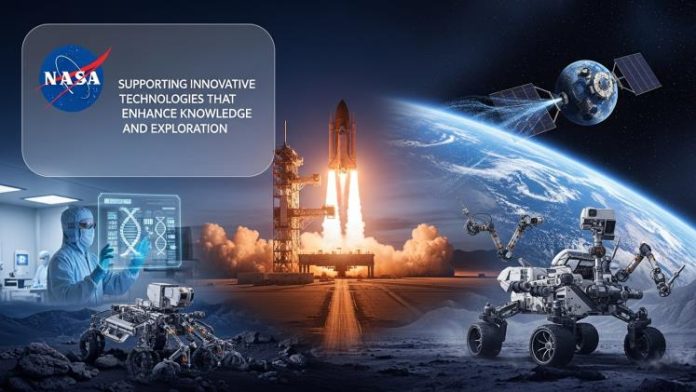NASA, the National Aeronautics and Space Administration, is a leader in advancing technologies that expand human knowledge and exploration. Beyond space missions, NASA develops cutting-edge tools, systems, and methods that push the boundaries of science and engineering. These innovations are applied to satellite systems, propulsion technologies, robotics, and observational instruments, enabling researchers to study planets, stars, and Earth in unprecedented detail. By investing in innovative technologies, NASA enhances both exploration capabilities and scientific understanding.
How Does NASA Develop Innovative Technologies?
NASA fosters technological innovation through extensive research and development programs. Engineers and scientists work collaboratively to design solutions for complex space and Earth science challenges. Technologies often undergo rigorous testing in labs, simulators, and real-world environments to ensure reliability and effectiveness. Partnerships with universities, research institutions, and private industry further accelerate innovation by combining expertise, resources, and ideas. Through this process, NASA produces practical and groundbreaking tools that support both space exploration and scientific discovery.
Why Are Innovative Technologies Important for Exploration?
Exploration requires advanced tools to gather data, analyze environments, and ensure safety in extreme conditions. Innovative technologies allow NASA to send rovers to distant planets, operate satellites for Earth observation, and maintain human space missions in low Earth orbit and beyond. These technologies improve accuracy, efficiency, and sustainability in exploration. Without continuous technological development, missions would face limitations in scope, safety, and scientific output, underscoring the critical role of innovation in expanding human knowledge.
What Are Examples of NASA’s Technological Innovations?
NASA has introduced numerous technologies that have transformed both space missions and daily life on Earth. Robotics advancements, such as autonomous rovers and robotic arms, allow exploration of distant planets and asteroids. Satellite instruments monitor climate, weather, and environmental changes with precision. Propulsion systems and spacecraft design innovations enable longer and safer missions. Even materials science breakthroughs, including lightweight composites and radiation-resistant materials, are crucial for protecting both astronauts and equipment in harsh space conditions. These examples demonstrate how NASA’s technology supports exploration while benefiting broader scientific fields.
How Does NASA Collaborate With Researchers and Innovators?
Collaboration is a key element of NASA’s technological development. The agency partners with universities, startups, and established technology firms to create solutions that might not be possible within a single organization. Joint projects often focus on shared goals, such as developing sustainable propulsion, advanced sensors, or AI-driven systems for data analysis. These partnerships also allow researchers to test technologies in space-like conditions, accelerating development and ensuring that innovations are ready for practical application.
Why Is Technology Transfer Significant?
NASA’s technology transfer program ensures that innovations developed for space missions benefit society on Earth. Many tools and systems originally designed for exploration have been adapted for medical devices, environmental monitoring, transportation, and communication systems. By sharing technology with industry and academia, NASA fosters economic growth and encourages further research. This process maximizes the value of NASA’s investments and ensures that technological advances support both exploration and societal progress.
How Does Innovation Enhance Scientific Knowledge?
Innovative technologies provide scientists with the ability to collect, process, and interpret data more accurately and efficiently. Instruments like telescopes, spectrometers, and satellite sensors allow for detailed observations of celestial objects and Earth’s systems. Advanced computing and AI tools help researchers analyze complex datasets, identify patterns, and make predictions. By enhancing both data collection and analysis, technology directly contributes to expanding scientific understanding and generating new discoveries.
Conclusion: Why NASA’s Technological Innovation Is Vital
NASA’s commitment to supporting innovative technologies strengthens exploration and scientific research. Through the development of advanced tools, collaboration with researchers, and technology transfer programs, NASA enhances human knowledge and enables ambitious missions. These innovations improve the efficiency, safety, and accuracy of space exploration while creating tangible benefits for society on Earth. By continuing to invest in technology, NASA ensures that humanity can explore new frontiers, expand scientific understanding, and develop solutions that advance life both in space and at home.
